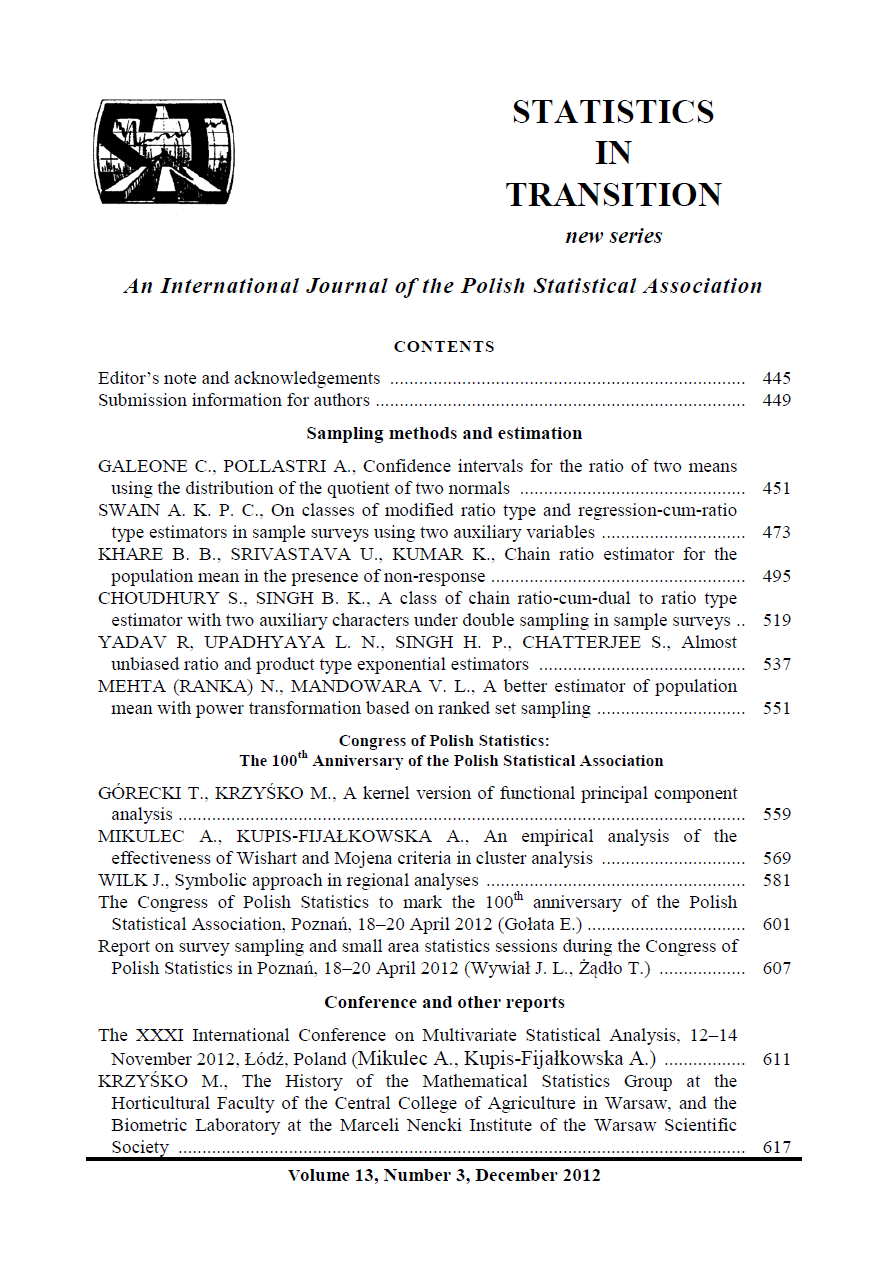ARTICLE
ABSTRACT
Ranked set sampling (RSS) was first suggested by McIntyre (1952) to increase the efficiency of estimate of the population mean. It has been shown that this method is highly beneficial to the estimation based on simple random sampling (SRS). There has been considerable development and many modifications were done on this method. This paper presents a modified ratio estimator using prior value of coefficient of kurtosis of an auxiliary variable x, with the intention to improve the efficiency of ratio estimator in ranked set sampling. The first order approximation to the bias and mean square error (MSE) of the proposed estimator are obtained. A generalized version of the suggested estimator by applying the Power transformation is also presented.
KEYWORDS
ranked set sampling, ratio estimator, power transformation estimator, auxiliary variable.
REFERENCES
KADILAR, C., UNYAZICI, Y. and CINGI, H. (2009). Ratio estimator for the population mean using ranked set sampling, Stat. papers,50,301-309.
KOWALCZYK B. (2004). Ranked set sampling and its Applications in Finite population studies, Statistics in transition, Vol.6, No.7 pp.1031-1046.
MCINTYRE, G. A. (1952). A method of unbiased selective sampling using ranked sets, Australian Journal of Agricultural Research, 3, 385-390.
SAMAWI, H. M. and MUTTLAK, H. A. (1996). Estimation of Ratio Using Rank Set Sampling, Biom. J. 38,6,753-764.
SINHA, A. K. (2005). On some recent developments in ranked set sampling, Bulletin of Informatics & Cybernetics, Research Association of Statistical Sciences, Vol. 37,136-160.
SINGH, H. P., TAILOR RAJESH, TAILOR RITESH and KAKRAN, M. S. (2004). An improved estimator of population mean using Power Transformation, J.Ind.Soc. Agril. Statist. 58(2), 223-230.
SINGH, S. (2003). Advanced Sampling Theory with Application, Vol. I, Kluwer Academic Publishers, Netherlands
